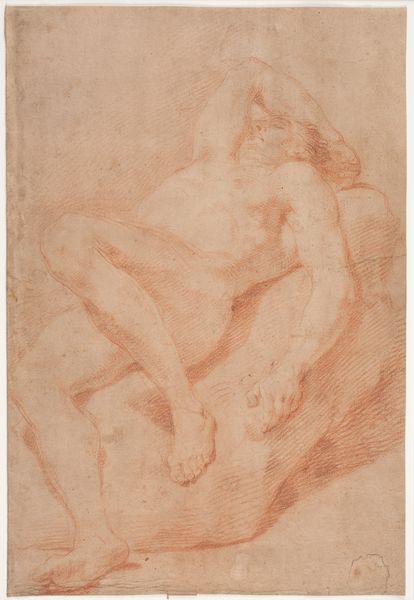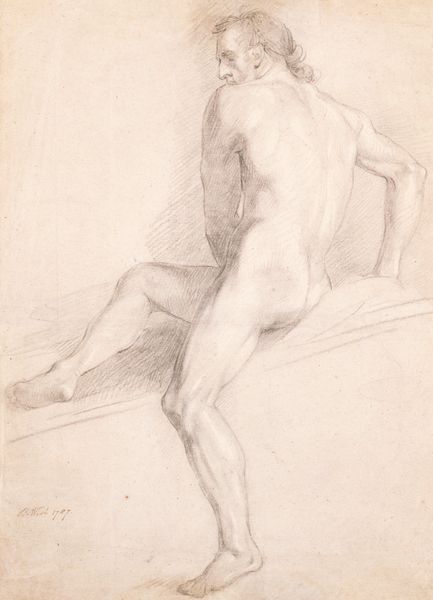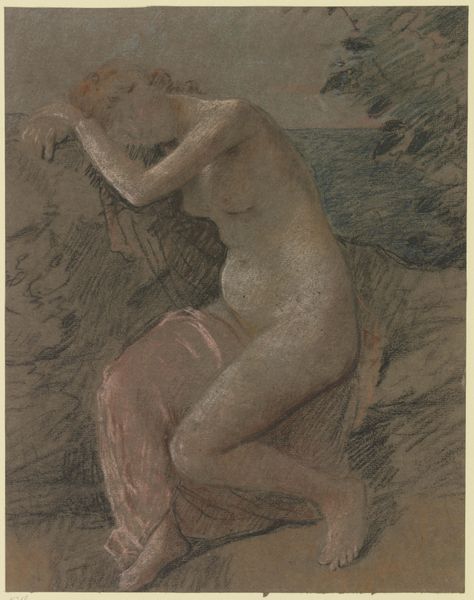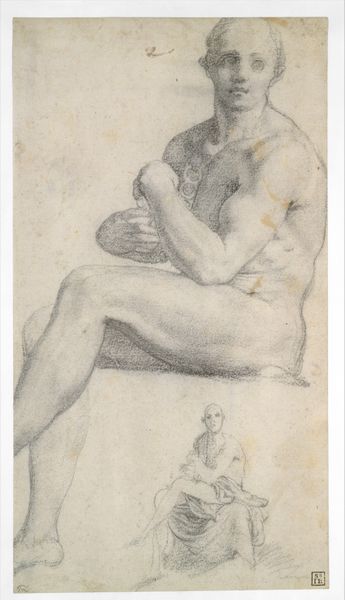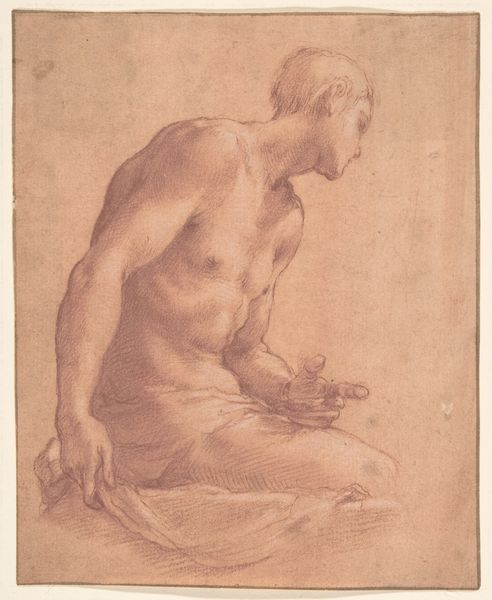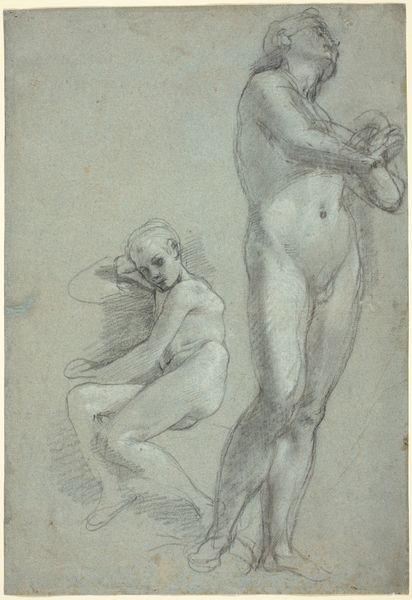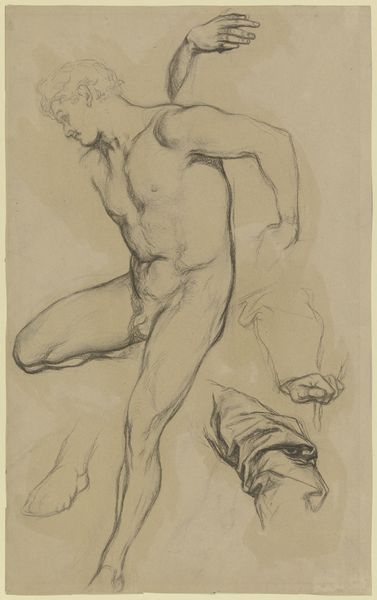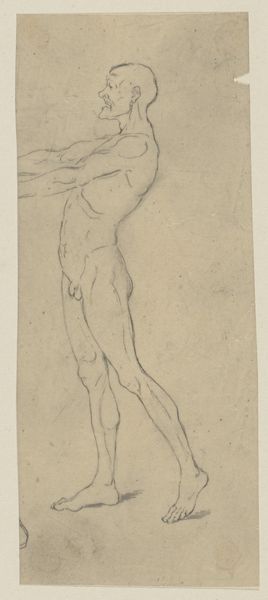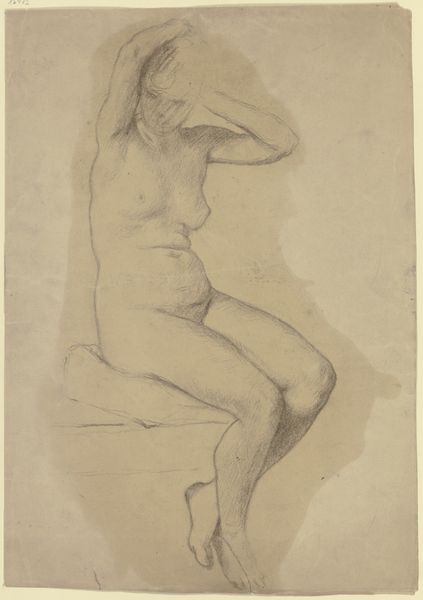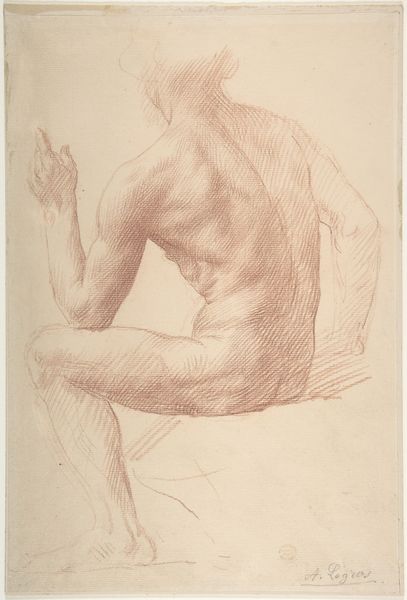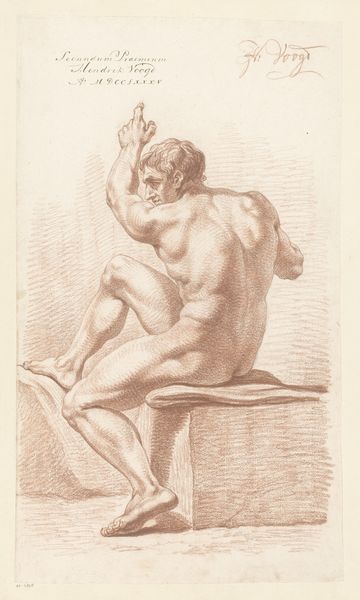
drawing, pencil, chalk, charcoal
#
portrait
#
pencil drawn
#
drawing
#
pencil sketch
#
classical-realism
#
charcoal drawing
#
figuration
#
pencil drawing
#
pencil
#
chalk
#
15_18th-century
#
charcoal
#
academic-art
#
nude
Copyright: Public Domain
Editor: So, this drawing, "Akt eines sitzenden Mannes, im Profil nach rechts," is attributed to Bernhard Neher the Elder and resides here at the Städel Museum. It appears to be charcoal and chalk on paper. I’m immediately struck by the pose—so contorted and self-enclosed. What can you tell me about this figure from a historical perspective? Curator: This work reveals much about the role of the nude in art academies of the 18th century. The pose, seemingly natural, is in fact a carefully constructed exercise. How does its stark simplicity stand in contrast to its period? Editor: Well, it feels very vulnerable and raw. You can almost feel the model's weariness and discomfort. The lines seem intentionally unfinished. Was this typical? Curator: Exactly. These 'unfinished' aspects are key. Think about what a finished painting meant at the time—displaying power, often through mythological or historical narratives. A sketch like this, made for training, unveils the infrastructure that supports those narratives, making visible the often hidden labor involved in constructing an idealized body. Who consumes it? Who benefits? Editor: That's fascinating! It highlights how even something seemingly basic is embedded in a much larger system of power and display. This wasn’t simply a study of form; it was about solidifying artistic conventions, right? Curator: Precisely. The drawing provides a vital record into artistic training that supported cultural and aesthetic values of the time. The use of live models reinforces that the goal was also a standardizing practice, of ideal human anatomy, based on those socio-political values. How might we apply those values today? Editor: I see what you mean! Thank you, this has really shifted my perspective on the drawing's significance. I see it not just as a simple life study, but as a snapshot of the complex social world of art in that era. Curator: Indeed. And understanding that complex social world deepens our appreciation, and questions about its relevance to contemporary artistic and socio-political thought.
Comments
No comments
Be the first to comment and join the conversation on the ultimate creative platform.

